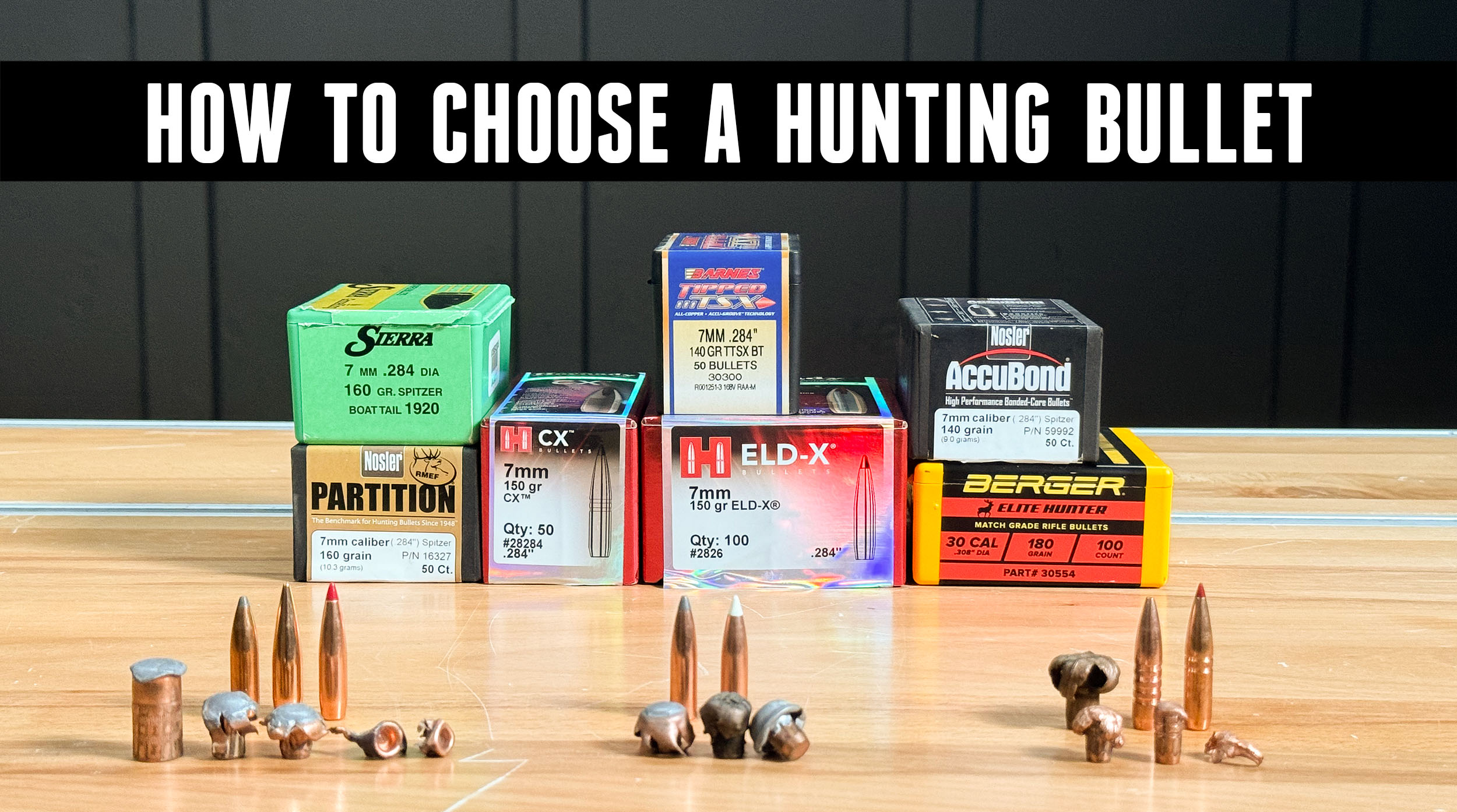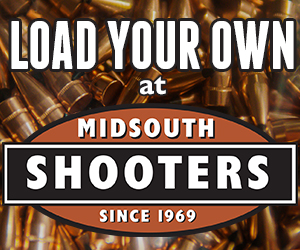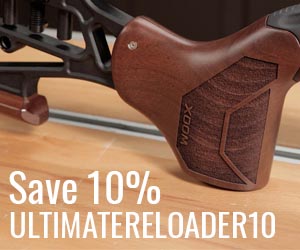Hunting bullet selection is more important than the cartridge, rifle or scope! The bullet is our direct connection between hunter and game. There are many different hunting bullet designs and they all work in different ways. All the choices can be bewildering. How do you select one wisely?
Disclaimer
Ultimate Reloader LLC / Making with Metal Disclaimer: (by reading this article and/or watching video content you accept these terms). The content on this website (including videos, articles, ammunition reloading data, technical articles, gunsmithing and other information) is for demonstration purposes only. Do not attempt any of the processes or procedures shown or described on this website. All gunsmithing procedures should be carried out by a qualified and licensed gunsmith at their own risk. Do not attempt to repair or modify any firearms based on information on this website. Ultimate Reloader, LLC and Making With Metal can not be held liable for property or personal damage due to viewers/readers of this website performing activities, procedures, techniques, or practices described in whole or part on this website. By accepting these terms, you agree that you alone are solely responsible for your own safety and property as it pertains to activities, procedures, techniques, or practices described in whole or part on this website.
What Do You Need in a Hunting Bullet?
Years ago, a friend of mine hunted exclusively with his wonderful .300 Winchester Magnum Model 70 rifle. He turned to a newly-introduced 165 grain polymer-tipped bullet for his mule deer hunt. It was an accurate load and powerful, churning up what was probably about 3,100 fps to 3,200 fps. (In those days, few of us had chronographs.) He was presented with an unexpectedly close range shot opportunity and fired.
It was a classic case of gross overexpansion and under penetration. The bullet was far too fragile and far too soft for such a high impact velocity. The deer’s leg was nearly severed but the animal still attempted to flee. Fortunately, my friend quickly ended things with a second shot placed into the vitals through the ribcage. Remember that this was quite some time ago before many premium or mono-metal bullets were available. A heavier, slower, conventional soft-nose bullet would likely have done a better job. The rifle had plenty of power and shot placement was reasonable, but the bullet came up short.
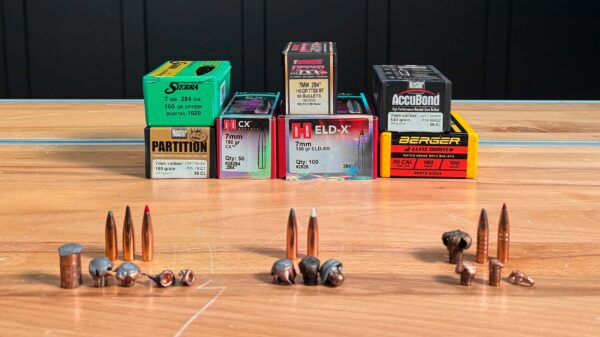
So, what should you look for in a hunting bullet? That depends on a number of factors, not the least of which is what you want from your bullet.
Key performance factors include the following:
- Accuracy?
- High ballistic coefficient for long range use?
- Quick kill?
- Good blood trail?
- Minimal meat damage?
- Deep penetration?
- Rapid expansion?
- Retained bullet weight?
Depending on how you hunt, where you hunt, what you hunt with, and what game you hunt, some of those factors might not be important to you. I think that as hunters, we all strive for a quick kill. At least I certainly hope so.
Types of Hunting Bullets
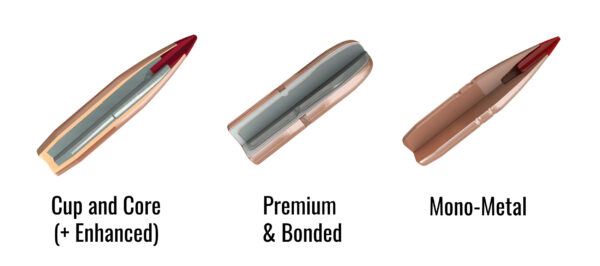
Cup & Core Bullets
In general I break down hunting bullets into three broad types: cup and core bullets (and enhanced versions), premium and bonded bullets, and mono-metal bullets. Each offers different characteristics and performance.
The basic cup and core bullet is simply a metal jacket, usually a copper alloy, containing a lead core. These bullets can be excellent and are generally economical. As a group they tend to be quite accurate which should be no surprise as most match bullets are also cup and core. They are of a weaker design and can separate, so it’s important to avoid over-stressing the design with excess velocity.
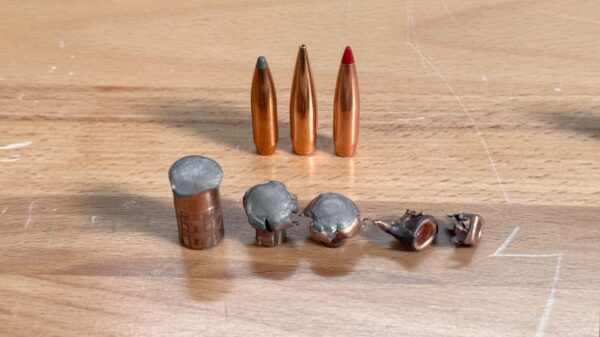
Many bullet makers choose to enhance their cup and core bullets to improve their performance either “in flight” or on game. Enhancements may be an elongated ogive and gently tapered boat tail for a higher ballistic coefficient or a thicker, heavier jacket, perhaps even with internal rings to retain the lead core and improve on-game performance.
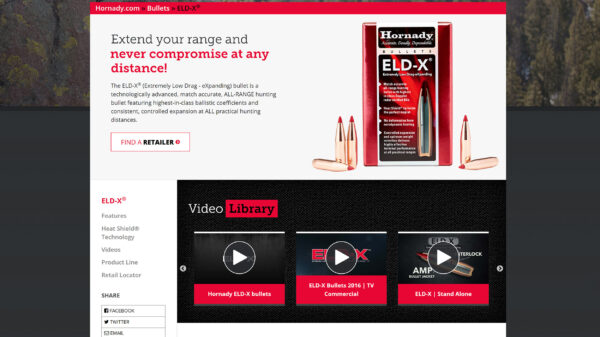
Examples of enhanced cup and core bullets include Hornady’s Interlock, FTX (for lever action rifles), SST, and ELD-X bullet lines. Berger hunting bullets include their classic hybrid hunter, elite hunter, and VLD hunting lines.
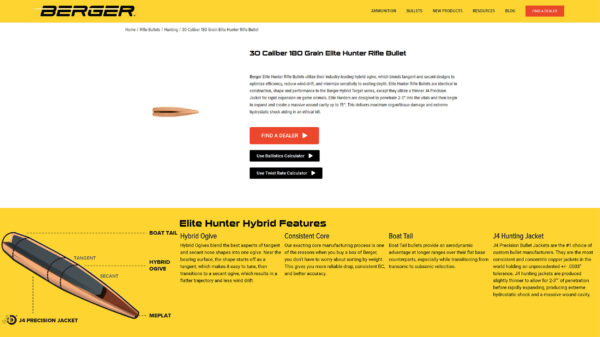
There are many others and listing them all is beyond the scope of this short article. I’ve used both the ELD-X and the Berger Elite Hunter in recent years to take elk and mule deer. Both of them did just fine, the 178 grain .30 caliber ELD-X taking a cow elk at 405 yards and the 180 grain .30 caliber Berger Elite Hunter claiming a muley buck at about 350 yards. Many other game animals have fallen to my hunting rifles using various cup and core bullets over the decades. I’ve also had cup and core bullets shed their lead core and penetrate less than was optimal. I’ve never lost an animal due to that, but it was a near thing once.
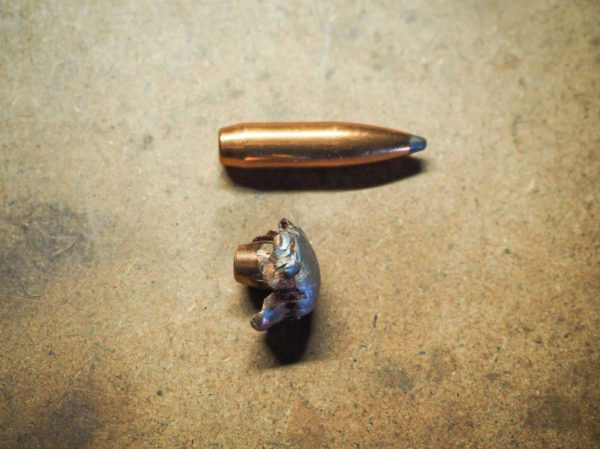
Premium and Bonded Bullets
Here in North America, John Nosler got the ball rolling on premium bullets with his Partition back in the 1940s. That bullet was the result of a moose hunt in which a conventional bullet failed to penetrate sufficiently to take a bull moose. After this incident, John designed the famous Nosler Partition bullet which is still available and still effective.
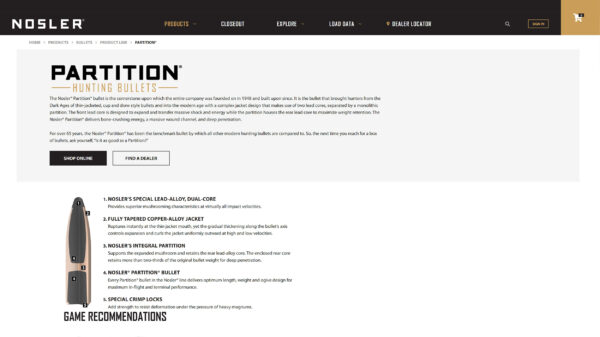
It consists of a relatively soft forward portion which expands easily, and a rear core surrounded by jacket material. That rear core tends to keep on penetrating through after the front is fully expanded or even shed completely. The biggest game I’ve taken, a big bull elk and a grizzly, were both taken with heavy-for-caliber Partition bullets, selected for their penetration.

Premium bullets do not need to be bonded, but many are. Bonding is a process that essentially sticks the lead core to the bullet jacket so that they don’t separate in game. Examples of bonded bullets include the wonderful old Bitterroot Bonded Core, Nosler Accubond, Swift Scirocco, and Swift A-Frame. The A-Frame can be described as a heavy-duty, thick-jacketed partition type bullet in which the front portion is bonded to the jacket. Interestingly, in recent years Hornady has dropped their line of Interbond bullets, believing that role is better served by their monolithic bullet, the CX. I’ve taken game with bonded bullets and have been thoroughly impressed by their expansion and weight retention. It’s not unusual to find a well-expanded bonded bullet hung up in the off-side hide of a game animal, instead of causing an exit wound. Some hunters believe this is insufficient penetration, as they want an exit wound with every shot. While revered for their strength and penetration, these bullets can occasionally over expand and under penetrate. They are also more expensive than cup and core bullets.
Monolithic/Mono-Metal Bullets
Monolithic or mono-metal bullets do not have a lead core. They’re pure copper or a copper alloy and legal in all 50 states. Barnes really put all-copper bullets on the map here in North America decades ago. Their bullet evolved from the X bullet to a coated version then to the TSX and tipped TSX (TTSX). The TSX and TTSX are currently still in production and are doing well. I’ve happily used Barnes bullets on game and have been pleased with their performance.
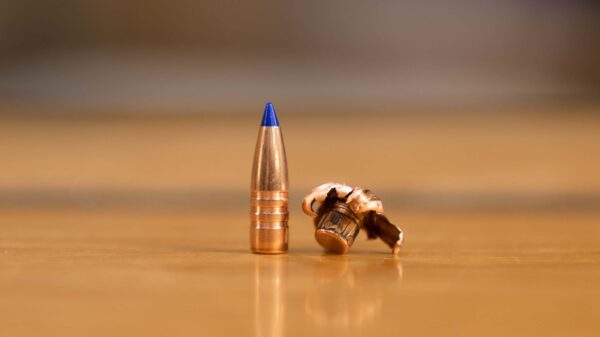
Other bullet makers, notably Hornady and Nosler, also got into the monolithic bullet market. Rather than a pure copper bullet, they chose to go with a harder copper alloy to reduce barrel fouling. Hornady’s GMX evolved into today’s CX, a fine hunting bullet.
Much of the use of the monolithic bullets stems from legal requirements to use them. This varies from state to state and from area to area. Most of North America is still open to lead-core bullets, but the requirement to use unleaded bullets is spreading. If you are required to use a lead-free bullet, take heart, today they are also good hunting bullets.
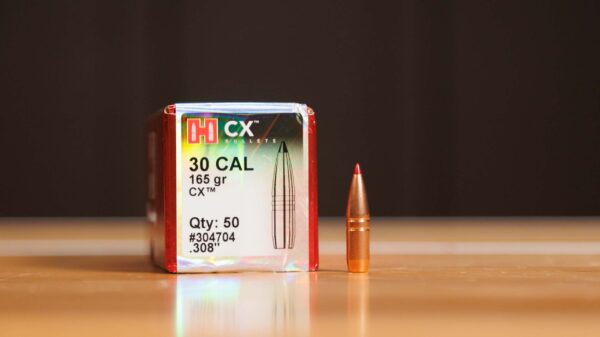
Other hunters choose to use them for their amazing penetration on game. I recently took a black bear on an Idaho backcountry hunt using a 165 grain Hornady CX from my .30-06. I was pleased to see an exit wound of roughly 1.5” diameter indicating good expansion on the smallish bear. I’ve also taken several mule deer with all-copper bullets. Monolithic bullets seem to enable a cartridge to punch above its weight by providing exemplary penetration.
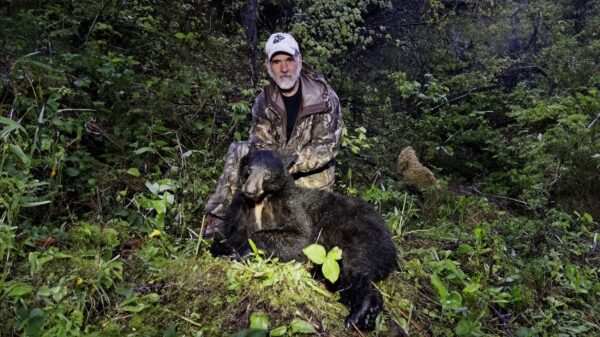
A detraction is that they tend to be harder than cup and core bullets and require a higher impact velocity for proper expansion. This is important. Learn what the minimum recommended impact velocity for a particular bullet is, and use a ballistics calculator to determine at what range that occurs. Hornady has a free online ballistics calculator and 4DOF app that are easy to use. I have been very impressed with Hornady’s CX bullet, but I set my personal limit for that bullet at 400 yards with my favored .30-06. This is when the bullet has dropped off towards 2,000 fps, which is Hornady’s minimum impact velocity for proper bullet expansion. That’s okay with me, in my decades of hunting I’ve shot only a few game animals beyond 400 yards.

It’s advisable to drop down to a lighter bullet weight when switching from a traditional cup and core to a monolithic bullet. For example, if you’re happy with a 180 grain cup and core from your .300 magnum, .30-06, or .308 Winchester, consider dropping down to a 165 or even 150 grain monolithic for good performance. Since copper is less dense than lead, the bullets are longer for a given weight and penetrate very well. According to Hornady, “You will get exits.” with their CX. If you convert to monolithic bullets, start your load workup all over with a very clean rifle barrel. Monolithic bullets often build pressure with less than what would be a max load using a cup and core bullet. Tread carefully here and reduce powder charges as necessary.
Other Factors to Consider
We’ve looked at the main types of hunting bullets available. This is where your choices as a hunter enter the selection process.
The type and size of game being hunted matters. Some deer and black bear tend to be 150 pounds or less. Deep penetration is NOT required on an animal that may only measure 10 inches from side to side. On the other hand, an 800-pound bull elk is seriously muscled with formidable bone density. A deep penetrating bullet is an asset. Seriously consider a very heavy cup and core bullet, a heavy premium or bonded bullet, or a monolithic bullet when a lot of penetration is likely to be required.

The rifle cartridge used is also worth considering. Deer and bear continue to be taken year after year by hunters using a .30-30 lever action rifle. Their cup and core bullets generate a mere 2000 fps to 2400 fps at the muzzle. The .30-30 cartridge has been around for a very long time and engineers have long since perfected the cup and core bullets used from it.
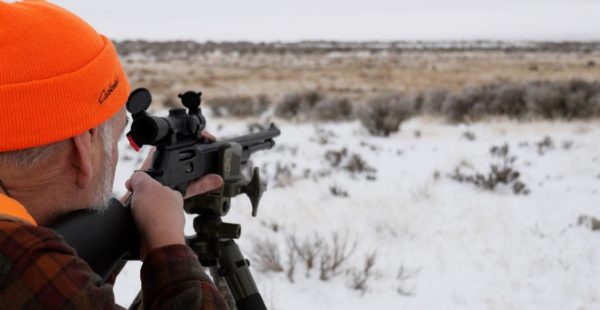
I’ve taken most of my game animals between 50 and 350 yards. This includes mule deer, whitetail deer, pronghorn antelope, elk, black bear, and grizzly. I’ve been well-served by cup and core bullets, premium bullets, bonded bullets, and monolithic bullets.
The range at which you’re shooting game is critical. If you’re routinely shooting game at 400 yards or beyond, you’ll be best served by a bullet designed for long range use. It should have a high ballistic coefficient, excellent accuracy, and should expand well even at reduced impact velocities.
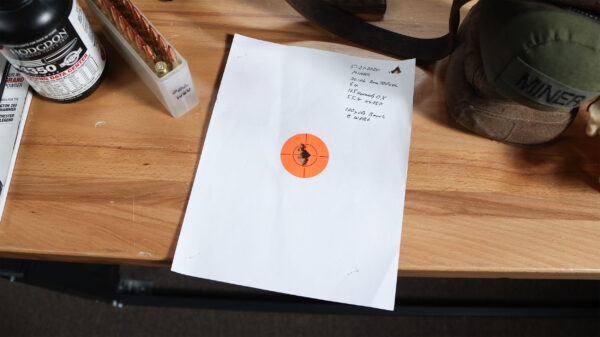
How much accuracy is enough? Today’s rifles, optics, cartridges, and bullets are capable of amazing accuracy, but is a ¼ or ½ MOA rifle really necessary to hit the basketball-size vitals of big game? If extreme accuracy is necessary or desirable for your hunting pursuits, then by all means pursue it with the best optics, mounts, rifles, and ammunition available! Having the best equipment doesn’t guarantee success. You need to learn to shoot well at whatever ranges you’re shooting. Most game continues to be taken at modest ranges.

On my most recent Oregon elk hunt we were facing wide open spaces and had to do quite a stalk, crawling to 405 yards before we ran out of cover. I was using a sporter weight .30-06 Remington 700 CDL with a nice 6x Leupold zeroed at 200 yards with the Hornady 178 grain ELD-X bullet. I knew my drop and estimated the stout crosswind. That bullet broke the elk’s foreleg before penetrating through the heart. She did manage to run a couple of hundred yards, a testimony to her tenacity, and I finished her with a closer range shot. No bullet was recovered.
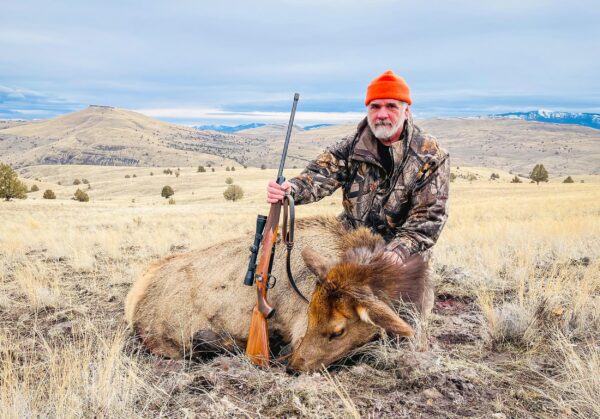
Legal requirements may well determine which general type of bullet you use. If the law requires a monolithic, no-lead bullet, then choose from among them. Some expand at lower velocities than others. In general it works well to choose a lighter bullet than whatever cup and core bullet may have been working well for you. Higher velocities help monolithic bullets perform better.
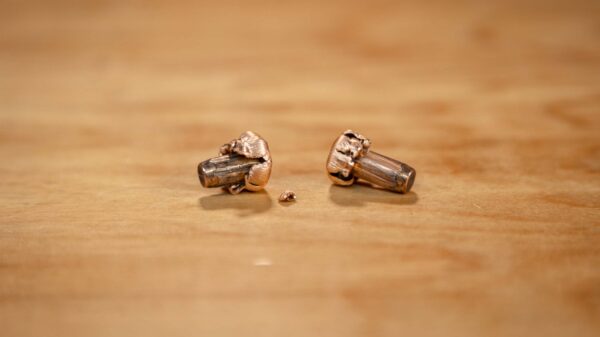
Some hunters, particularly those who treasure the meat from their game, prefer to avoid what they see as unnecessary meat damage. Bullet placement has a lot to do with that and is something that hunters can control. Put a good bullet through the ribs, into the lungs and/or heart and there won’t be much meat ruined. That said, heavier, slower bullets, bonded bullets, and monolithic bullets tend to do less meat damage. Lighter, faster, cup and core bullets tend to do a lot of meat damage.
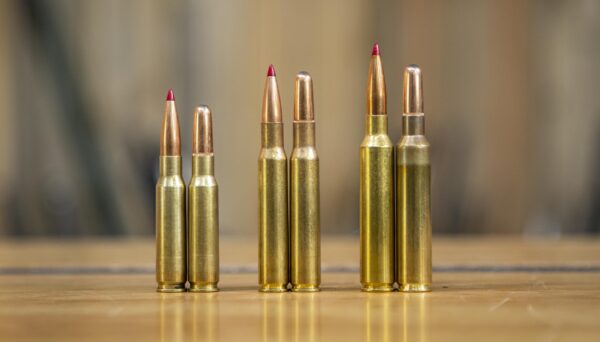
Some hunters insist on a bullet that causes a blood trail. They often hunt thick woods or thick brush and a deer that runs even 50 yards after the shot may prove incredibly difficult to find. A heavy blood trail helps tremendously with this. These hunters want a bullet that fully penetrates and exits. Consider heavy-for-caliber cup and core bullets, premium bullets designed for penetration, and monolithic bullets in order to produce exit wounds.
Conclusion
Take a look at yourself and what you want out of a hunting bullet. Do you favor accuracy above all else? Long range bullet performance? Maximum penetration and a blood trail? Do you like your bullet to remain intact or are you okay when it fragments in the chest cavity for a quick kill? Are you required to use a monolithic, no-lead, hunting bullet?
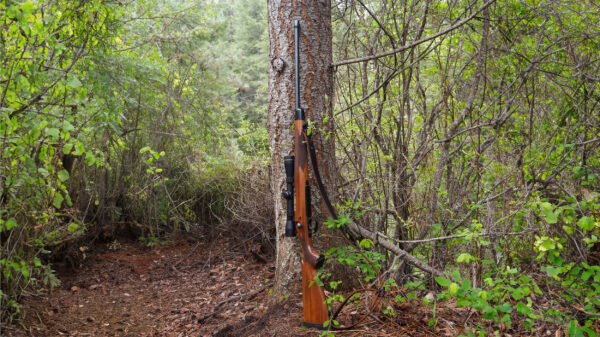
It’s not so much that there are bad bullets, but there are poor bullet choices for the task at hand. There are also GREAT bullet choices for all these tasks. Do your homework, study, learn, ask questions, and choose the bullet that works best for you.
Cup and core bullets are best for long-range ballistics/precision. Bonded bullets are the most versatile and best for heavy game. Monolithic bullets are great for penetration and lead-free compliance.
Shot placement remains the most important thing. Put a good bullet where it belongs and you’ve done well. Get off the bench and practice from field positions!
Get the Gear
Hornady .30 Caliber .308 Diameter 178 Grain ELD-X at Midsouth Shooters Supply
Hornady .30 Caliber .308 Diameter 165 Grain CX at Midsouth Shooters Supply
Hornady .30 Caliber (30-30) .308 Diameter 160 Grain FTX Flex Tip at Midsouth Shooters Supply
Berger .30 Caliber .308 Diameter 180 Grain Elite Hunter at Midsouth Shooters Supply
Barnes Bullets at Midsouth Shooters Supply
Don’t miss out on Ultimate Reloader updates, make sure you’re subscribed!
Thanks,
Guy Miner
